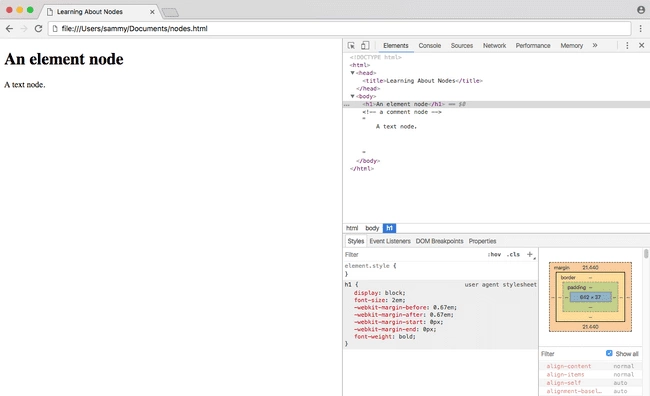React代码开发规范
前言
一般在团队开发中每个人的代码习惯都不太一样,这样就会导致代码风格不一致,以致于维护和修改bug的时候看别人的代码成为一种痛苦…
这种情况尤其在前端开发中尤为明显。因为关于前端的开发规范貌似也没有行业权威标准。这几天在网上看了下,基本上在开发中通过eslint进行约束,airbnb的标准貌似颇为推崇,今天稍微整理下,准备在日后开发中形成习惯。
基本规则
- 每个文件只包含一个React组件。eslint: react/no-multi-comp;(官方表示在无状态,或者Pure组件允许一个文件包含多个组件,但是我个人觉得一个文件只包含一个组件比较浅显易懂)
- 始终使用JSX语法;
- 不要始终React.createElement方法,除非初始化app的文件不是JSX格式;
Class vs React.createClass vs stateless
如果组件拥有内部的state或者refs时,更推荐使用class extends Component,除非有更好的理由使用mixin。eslint:react/prefer-es6-class
// bad
const Listing = React.createClass({
// …
render() {return <div>{this.state.hello}</div>;
}
});// good
class Listing extends React.Component {
// …
render() {return <div>{this.state.hello}</div>;
}
}
如果组件没有拥有内部的state或者refs,那么普通函数(不要使用箭头函数)比类的写法更好:
// badclass Listing extends React.Component {render() {return <div>{this.props.hello}</div>;}}// bad (因为箭头函数没有“name”属性)const Listing = ({ hello }) => (<div>{hello}</div>);// goodfunction Listing({ hello }) {return <div>{hello}</div>;}
命名
- 拓展名:React组件使用.jsx扩展名;
- 文件名:文件名使用帕斯卡命名:HomePage.jsx
引用命名:React组件使用帕斯卡命名,引用实例采用驼峰式命名:eslint: react/jsx-pascal-case)(个人不喜欢这样,引用命名还是按照帕斯卡命名)
// bad
import reservationCard from ‘./ReservationCard’;// good
import ReservationCard from ‘./ReservationCard’;// bad
const ReservationItem =; // good
const reservationItem =;
声明
不要使用displayName属性来命名组件,应该使用类的引用名称。
// badexport default React.createClass({displayName: 'ReservationCard',// stuff goes here});// goodexport default class ReservationCard extends React.Component {}
对齐
为JSX语法使用下列的对齐方式:eslint: react/jsx-closing-bracket-location
// bad<Foo superLongParam="bar"anotherSuperLongParam="baz" />// good<FoosuperLongParam="bar"anotherSuperLongParam="baz"/>// 如果组件的属性可以放在一行就保持在当前一行中,(个人觉得如果只有一个属性就放在一行)<Foo bar="bar" />// 多行属性采用缩进<FoosuperLongParam="bar"anotherSuperLongParam="baz"><Quux /></Foo>
引号
JSX的属性都采用双引号,其他的JS都使用单引号:jsx-quotes。
为什么这样做?JSX 属性 不能包含转义的引号, 所以当输入”don’t”这类的缩写的时候用双引号会更方便。
// bad<Foo bar='bar' />// good<Foo bar="bar" />// bad<Foo style={{ left: "20px" }} />// good<Foo style={{ left: '20px' }} />
空格
始终在自闭和标签前添加一个空格。
// bad<Foo/>// very bad<Foo />// bad<Foo/>// good<Foo />
属性
属性名称始终使用驼峰命名法。
// bad
// good
当属性值等于true的时候,省略该属性的赋值。eslint:react/jsx-boolean-value
// bad
// good
括号
使用括号包裹多行JSX标签,react/wrap-multilines
// badrender() {return <MyComponent className="long body" foo="bar"><MyChild /></MyComponent>;}// goodrender() {return (<MyComponent className="long body" foo="bar"><MyChild /></MyComponent>);}// good, when single linerender() {const body = <div>hello</div>;return <MyComponent>{body}</MyComponent>;}
标签
当标签没有子元素的时候,始终使用自闭合的标签:eslint: react/self-closing-comp
// bad
// good
如果控件有多行属性,关闭标签要另起一行。 eslint: react/jsx-closing-bracket-location
// bad
// good
方法
在 render 方法中事件的回调函数,应该在构造函数中进行bind绑定。 eslint: react/jsx-no-bind。
为什么这样做? 在 render 方法中的 bind 调用每次调用 render 的时候都会创建一个全新的函数。
// badclass extends React.Component {onClickDiv() {// do stuff}render() {return <div onClick={this.onClickDiv.bind(this)} />}}// goodclass extends React.Component {constructor(props) {super(props);this.onClickDiv = this.onClickDiv.bind(this);}onClickDiv() {// do stuff}render() {return <div onClick={this.onClickDiv} />}}
React 组件的内部方法命名不要使用下划线前缀。
// bad
React.createClass({
_onClickSubmit() {// do stuff
},
// other stuff
});// good
class extends React.Component {
onClickSubmit() {// do stuff
}
// other stuff
}
排序
class extends React.Component的顺序:
- static静态方法
- constructor
- getChildContext
- componentWillMount
- componentDidMount
- componentWillReceiveProps
- shouldComponentUpdate
- componentWillUpdate
- componentDidUpdate
- componentWillUnmount
- 点击回调或者事件回调 比如 onClickSubmit() 或者 onChangeDescription()
- render函数中的 getter 方法 比如 getSelectReason() 或者 getFooterContent()
可选的 render 方法 比如 renderNavigation() 或者 renderProfilePicture()
- render
怎么定义propTypes, defaultProps, contextTypes等
import React, { PropTypes } from 'react';const propTypes = {id: PropTypes.number.isRequired,url: PropTypes.string.isRequired,text: PropTypes.string,};const defaultProps = {text: 'Hello World',};class Link extends React.Component {static methodsAreOk() {return true;}render() {return <a href={this.props.url} data-id={this.props.id}>{this.props.text}</a>}}Link.propTypes = propTypes;Link.defaultProps = defaultProps;export default Link;
关于这个开发规范差不多就这样吧,eslint的配置个人在研究下,下次再放出来



































还没有评论,来说两句吧...